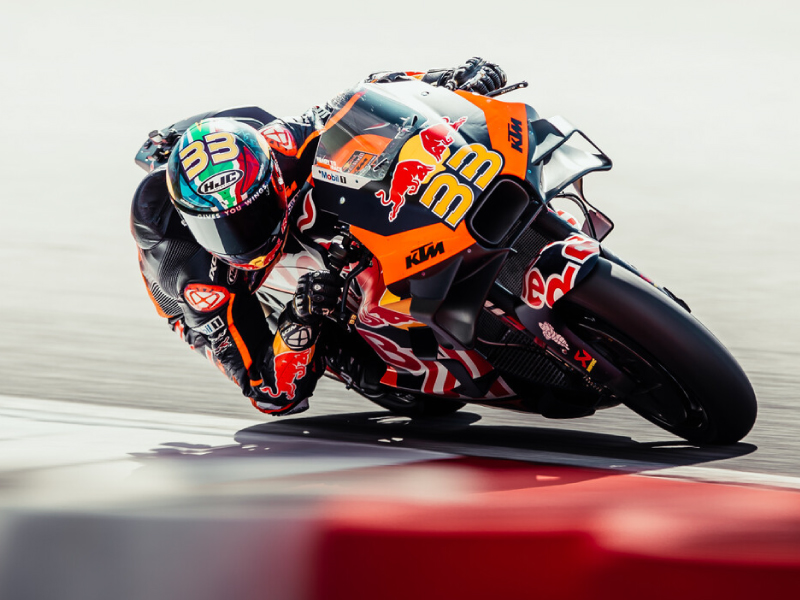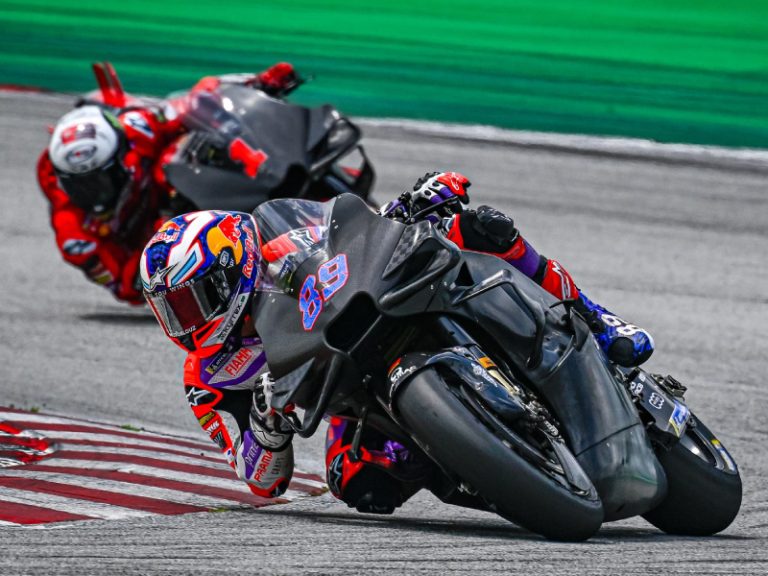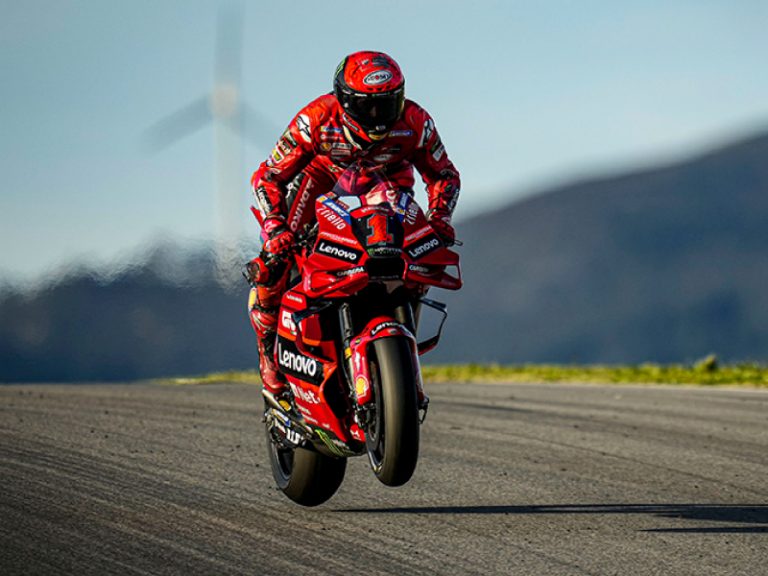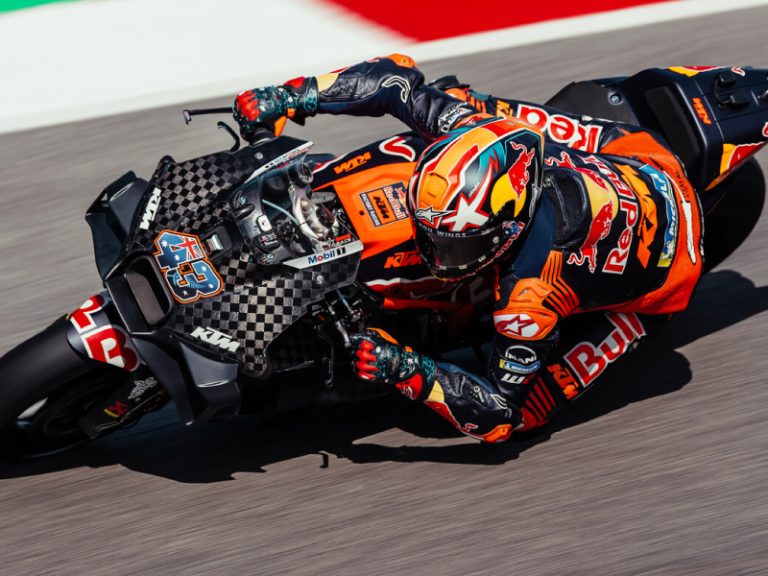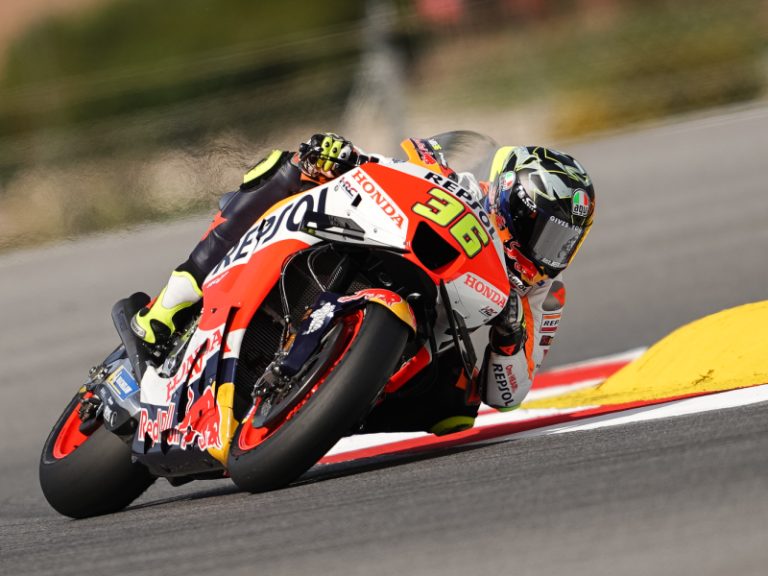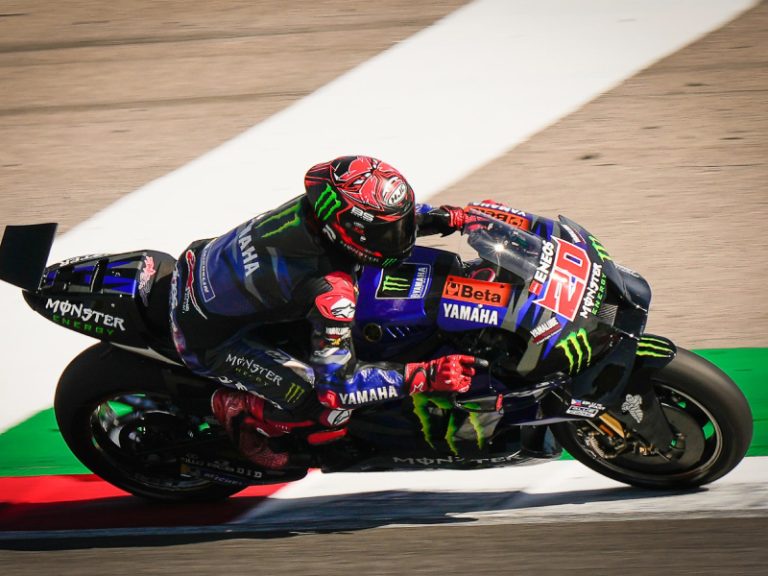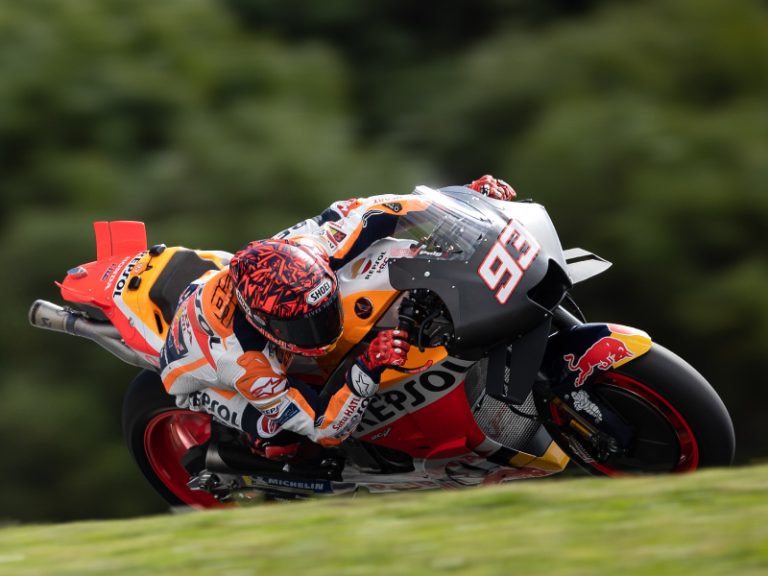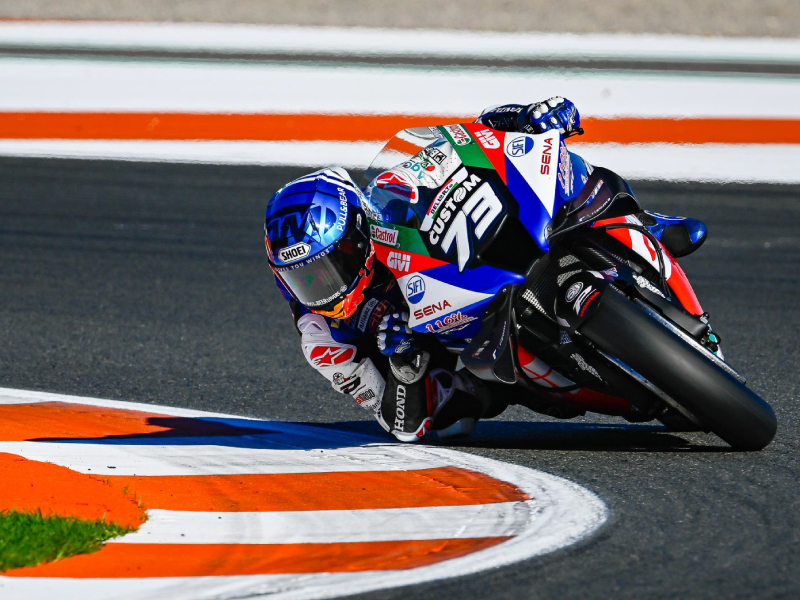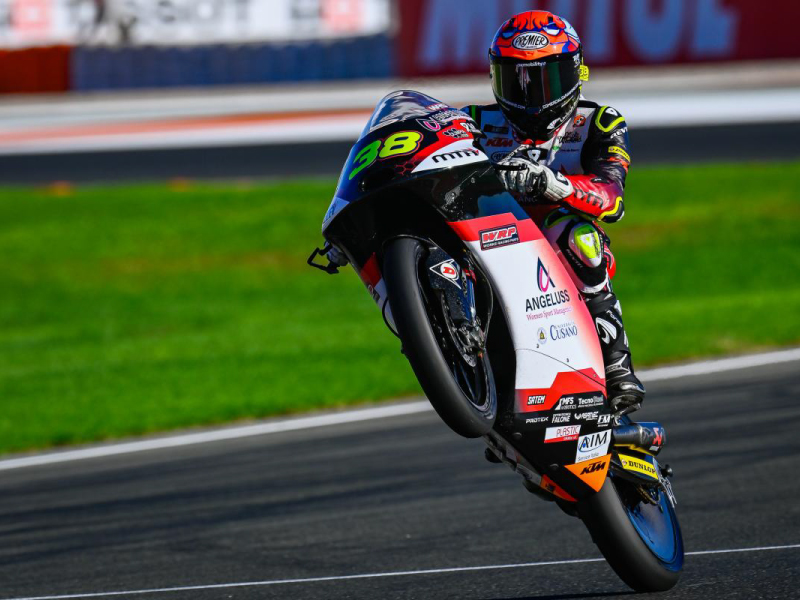Here’s the thing about pre-season MotoGP testing. It’s incredibly difficult.
The whole point of riders circulating hundreds of laps in a non-competitive format is to come to some sort of consensus regarding the way forward, except it’s really not that easy.
Firstly, the riders have spent the last three months hanging out on whichever luxurious beach on whatever exotic island surrounded by a host of willing young maidens – and riding a MotoGP bike is a distant memory by the time work restarts for the year. They are rusty, tense and possibly a bit dissociated, especially when compared to the battle-hardened state they were in after 20 rounds last season. The feedback they give might be a touch conflicting to begin with.
Add to that the different time of year they do testing, although MotoGP has been clever about that more recently. We used to see tests in places like Japan, Australia and Spain during the “winter” period when the temperatures do not match that of the race in any way so however the bike performs at the test will be completely different during the race some months later.
This year, the primary test was done at Sepang in Malaysia, a country that is somewhat equatorial and varies very little during the seasons. Then they went to Portimao in Portugal a mere two weeks before the race, so conditions will be somewhat similar.
What does change, though, is the grip levels. After two or three days of MotoGP testing, the track is more matted with rubber than the bucket of your Ford Raptor. The grip is unbelievable. Deceptively so. During the last hours of a test, a rider will put together everything they’ve learnt from the test, go out on track with fresh tyres and an attacking setup and achieve a devastatingly good lap time, and walk around smugly thinking the championship is already wrapped up.
Of course, when they arrive on race weekend, most of the rubber is gone, the wind has blown seventeen types of new grit onto the circuit and recent rain showers have lifted the grease and gunk hiding between the minute cracks in the tar. Grip goes from coarse sandpaper to freshly soaped glass. Suddenly all the wonderful characteristics the new bike had during the test have evaporated and it is a nightmare to ride.
Mind you, the teams have been doing this for some time, as have many of the riders, and they have learnt to factor in such irregularities, although there’s a huge deal of guess work involved and they very often get it wrong.
Something they can’t factor in as easily is the microscopic gains each new component adds or loses, given how incremental MotoGP development has become. At track days, some confident sounding person might offer to turn some knobs on your track bike, and will explain the various benefits of each. With a massive injection of placebo confidence, the rider heads out and drops 1.5sec and declares the changes miraculous and the mechanic worthy of sainthood.
MotoGP is trickier. Put it this way, the fastest rider during the Sepang test this year was only 0.2sec faster than the fastest rider at the Sepang pre-season test last year. Many of the ‘works’ riders actually went slower than last year. How exactly does that work? Simply put, the increments are so minute that the riders need superhuman levels of feel to tell the bloody difference. The same goes for the engineers working through mountains of data. And often they get it wrong.
Testing is an impossibly difficult maze of factors that riders and teams need to navigate. Some get it right. And some get hopelessly lost. The worst part is, no one knows exactly how right or wrong they are until everyone lines up on the start grid of the first race. Even then, some teams are still developing, and the rider that wins the first race is very often not the same as the one that wins the championship. To put it mildly, reading into testing is a hopeless and pointless task. So here is us reading into testing. Enjoy….
The Red Ducati Storm
The big goal on everybody’s whispered lips is to beat Ducati. Last year, the Duke was the best bike on the grid. It would take at least an acre of tinfoil hat to suggest otherwise. Although they don’t say it openly, everyone’s eyes were fixed on the four Ducati garages during pre-season testing.
We would love to say that the competition has made huge steps towards putting a dent into Ducati’s domination, but that would be a flagrant lie. If anything, the competition should be as downcast as ever. Ducati were close to monopolizing the top ten places on all test days, and most concerning was a certain Pecco Bagnaia with his bright new Number 1 plate constantly towards the top of the timesheets. Ultimately, he managed to not only top the final test at Portimao, but also set an outright lap record for the track, becoming the first rider to dip below the 1:58 mark.
Words like: “it feels like Ducati built this bike for me” emanated from his quietly smiling lips, words that no doubt made the opposition’s stomach wrench in a cold sweat panic.
But it’s not necessarily all red carpets and superhighways to the 2023 championship for Ducati. There could be a problem creeping in towards the end of the season. For 2023, Ducati concentrated on evolving the previous package rather than developing a new one. The only big change for 2023 is a new engine that delivers smoother power. That means that the riders are lapping one bike they are already familiar with and have an early advantage on.
The problem comes in later in the season, when the bikes with completely new packages start getting their settings together and building pace, whereas Ducati will have reached a ceiling with its goods. The only question remains whether Ducati’s ceiling is high enough to outfly the incoming missiles. Let’s see.
Hard Working KTM
Technically, it’s KTM and Gas Gas now, with the Tech3 Team sporting the bright red livery of the KTM Group’s newest acquisition. However, despite a disguise more cleverly devised than Clark Kent’s glasses, the authorities are not fooled and both machines are simply called RC16.
Where Ducati did evolution, KTM did a revolution worthy of France in the late 18th century. Every little bit and bob of the machine was changed and tampered with. This makes sense as last year KTM did the evolution route, working more to refine the package from 2021. That means that the designers and engineers have two years of pent up development waiting to be unleashed, and unleash it they did.
KTM tried different frames, engines, electronics, aero packages, kitchen sinks, everything. No doubt, the riders became cross-eyed with disorientation, as is the way when you’re sitting on a different motorcycle every time you leave the pitlane.
This blood, sweat and tears regiment of parts testing resulted in a somewhat disheartening placing on the timesheets, reaching rock bottom when the four RC16s occupied four of the bottom five spots on the first day of testing at Portimao.
But this is why testing is so deceiving. Ducati, with fewer parts to test, could spend time refining setup and therefore hack away at lap times. Non-factory riders had nothing more to do than setup so they feature massively at the top of the timesheets.
KTM, on the other hand, were testing parts right up until the last day at Portimao, and then did some setup. That meager amount of setup development cut the margin of Brad Binder from 1.8sec to the leader after day one to a far more encouraging 0.5sec on day two.
We don’t have a magic crystal ball, but it’s possible that the KTM could be a force to reckon with in 2023.
The Honda Quagmire
Much like KTM, Honda threw the kitchen sink, the stove and all the plumbing at its RC213V and emerged somewhat mediocre. At the end of Portimao testing, it was Honda newbie Joan Mir who was top of the Wing riders, just ahead of Marc Marquez and fellow Honda newbie Alex Rins.
Mir said that he still needs time to adjust to the new bike, especially to the way it delivers its power that is expectantly different to the silky smooth in-line four of the Suzuki Mir used to race.
His former teammate Alex Rins on the LCR Honda seemed somewhat cheerful about his new seat, although much of that was down to lowering his expectations. He stated that the Honda was surprisingly less physical to ride than he had expected, except that he had expected it to be extremely physical indeed. Perhaps there is a life lesson to be learnt there.
Marc Marquez, who knew exactly what to expect, was somewhat less cheerful, showing clear frustration after nothing that was brought to the tests seemed to solve the Honda’s issues. After some setup play on the second day of testing at Portimao, Marquez showed a glimmer of hope as they found some improvements, although stated that their current pace is a top ten, maybe even a top five.
That’s clearly not what Marc Marquez signed up for. His contract with Honda expires next year. If Honda wants to keep its golden boy it’s going to have to come up with something…. and fast.
Back To Basics For Yamaha
There are engineers and designers in Japan who are no doubt feeling at least a little suicidal after the pre-season testing. Yamaha arrived with a stack of new parts to test that staff had most likely spent their entire Christmas slaving over only for none of it to work. This run of parts culminated in a little wing that looked as though it was stolen from one of Hotwheels’ more outlandish car models, attached to the end of the M1’s tailpiece.
After some difficulties during testing, on the last day of Portimao, all those parts that employees had slaved over were tossed in the bin, and Quartararo switched to what is essentially his 2022 aero package and chassis. He then ramped the bike up to an impressive third for the day.
What did stay in the bike on the last day is Yamaha’s new, faster engine that has been impressive so far. Last year, the Yamaha was constantly towards the bottom of the speed charts and now are flourishing towards the top.
Last year, Quartararo’s only major complaint was straight-line speed. Now he has it. That could be dangerous.
Nearly There Aprilia
Aprilia spent most of the test being nearly there. They tried various options throughout testing and remained a consistent runner-up to Ducati. Good news is that the Aprilia newbies, Miguel Oliveira and Raul Fernandez who have both stepped off KTMs, seem to have taken the Noale bikes like a duck to water, being instantly fast. The bad news is that the Aprilia veteran, Alex Espargaro, suffered debilitating cramps in his forearms. He is having surgery this week and should hopefully be fit for the race next weekend.
It’s going to be great! Watch this space!
Words: Donovan Fourie

